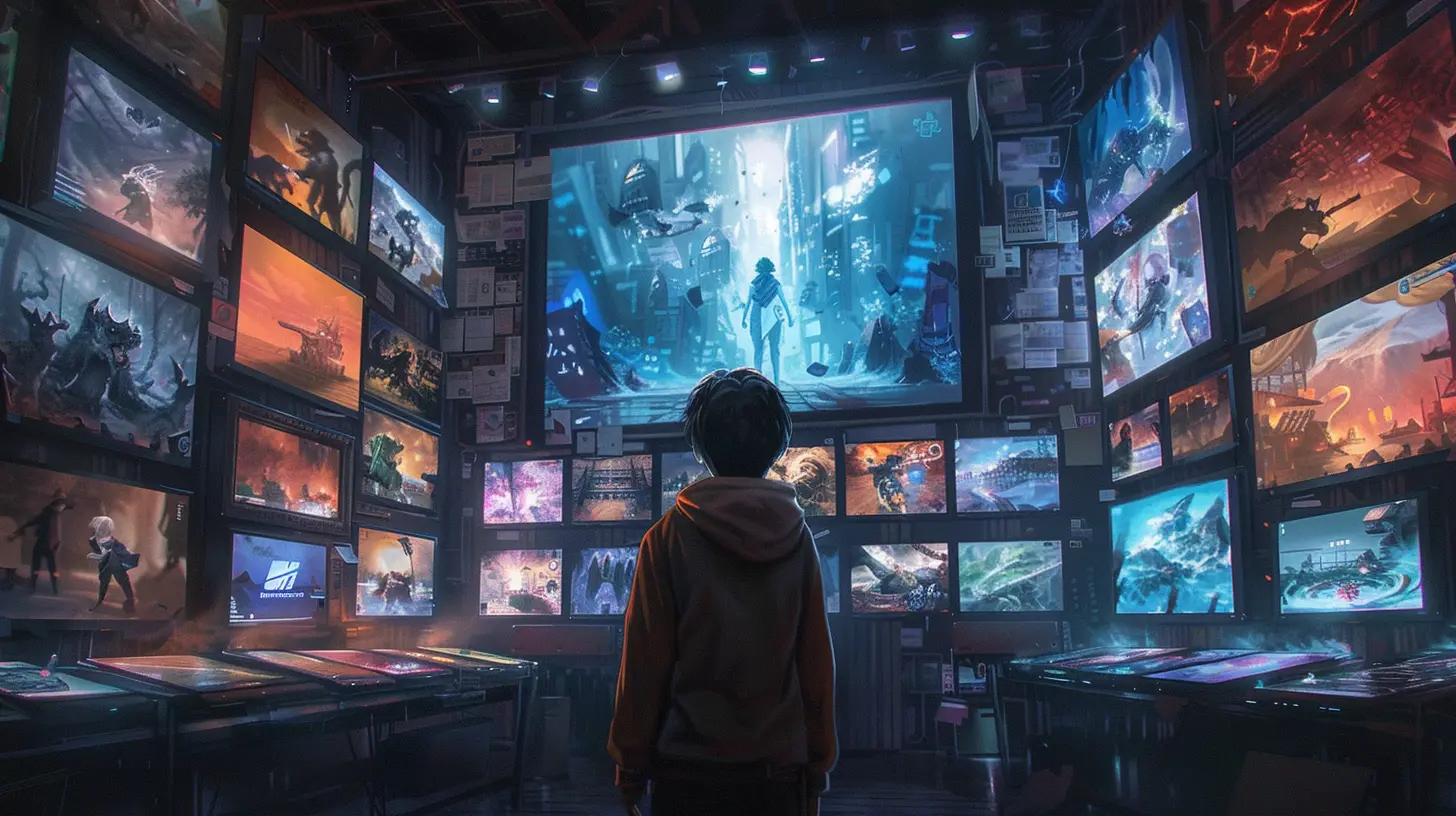Are In-Game Purchases Creating an Inequality Among Gamers?
10 October 2025
If you've played a game in the past few years—especially mobile or online multiplayer—you've probably come across in-game purchases. They pop up everywhere, from flashy skins and cosmetic gear to pay-to-win upgrades. What once started as a fun little option to personalize your character has snowballed into a multi-billion dollar industry. But here’s the real kicker—are these purchases making games unfair for players who don’t or simply can’t spend money? Are we looking at a growing class divide in the gaming community?
Let’s talk about it.
The Evolution of Gaming and In-Game Purchases
Gaming used to be pretty straightforward. You’d buy a game, pop it into your console or PC, and enjoy the full experience. No extra spending unless there was a legit expansion pack. Fast forward to today, and things have changed drastically.Most games now come with in-game stores. You can buy digital currency, exclusive items, powerful gear, or even access to the next level instantly. Free-to-play titles, in particular, rely heavily on “microtransactions” to make money. And they’re killing it.
But here’s the question: What happens when someone drops $100 on upgrades, while another player is grinding hours just to stay competitive?
Well… welcome to the new normal of gaming inequality.
Breaking Down the Types of In-Game Purchases
Not all in-game purchases are created equal. Some are purely cosmetic, while others can directly impact gameplay. Let’s break them down:1. Cosmetic Items
These are the least problematic. Think weapon skins in Counter-Strike: GO or outfits in Fortnite. They don’t affect how the game plays, just how it looks.But even cosmetics can feel exclusionary. Limited-edition items only available to big spenders? It’s like showing off designer sneakers in a high school gym.
2. Pay-to-Win (P2W) Upgrades
Here’s where things start getting murky. Pay-to-Win mechanics let players spend real money to gain advantages like stronger characters, better weapons, faster upgrades, etc.This can completely throw off game balance. Especially in competitive environments, players who spend money often dominate. It’s like running a race where one guy has a jetpack.
3. Time-Saving Boosts
These are a grey area. Games often require grinding (repeating certain tasks) to level up or unlock content. Time-saving boosts let you skip the grind—for a price.Some argue it's fine because not everyone has time to grind. Others say games are intentionally slowed down to push these purchases. Both have a point.
The Rise of the Digital Divide in Gaming
Let’s be real: money talks.In the old days, you'd prove your skill by playing well. Now? Sometimes all you need is a credit card. That shift changes everything.
Picture this: Two players start a mobile strategy game. One spends $0. The other splurges $50 on gear and resources. Guess who crushes their competition? Yup—the spender.
The free player struggles to keep up, not because they’re unskilled, but because they’re simply outmatched before the game even begins.
That’s what we call digital inequality in gaming.
The Psychological Trap of Microtransactions
Game developers aren’t just adding in-game purchases because they’re nice people. They know how to tap into our psychology.Ever heard of FOMO (Fear of Missing Out)? Limited-time offers pressure players to buy on impulse. Then there’s dopamine—the pleasure hormone. Games are designed to reward purchases with flashy animations and satisfying sounds.
It’s not just about getting ahead—it feels good to spend. That’s a slippery slope, especially for younger or financially vulnerable players.
How This Impacts Different Types of Gamers
The effects aren’t the same for everyone. Let’s look at a few gamer profiles:Casual Gamers
They log in when they have time and play mostly for fun. But if every other player has paid to upgrade, casuals often feel left behind. The fun dies—and so does the motivation.Competitive Players
These folks care about winning. But when skill takes a backseat to spending, frustration builds. Talent should shine, not wallets.Younger Gamers
Teens and kids are especially prone to peer pressure and addictive mechanics. Without setting spending limits, some end up blowing through their (or their parents’) money just to keep up.The Argument for In-Game Purchases
Okay, let’s play devil’s advocate for a minute.Not all in-game purchases are evil. Developers need to make money—especially with free-to-play models. Without microtransactions, many games wouldn’t exist at all.
Also, some players are happy to pay. They don’t have hours to grind and would rather spend a few bucks to enjoy the game on their own terms.
And hey, as long as it’s not P2W, what’s the harm in buying a cool battle outfit?
The Balancing Act: Can Games Be Fair and Profitable?
This is the million-dollar question (literally).Game developers need a sweet spot. One where free players can fully enjoy the game, while paying players get optional perks that don’t unbalance the experience.
Some games actually do this well. Take Warframe, for example—you can buy stuff, but you can also earn almost everything through gameplay. The grind is real, but fair.
Or look at League of Legends—cosmetics galore, but the core gameplay remains balanced for everyone.
Transparency is key. Players should know what they’re buying, how it affects their game, and whether it’s truly optional.
Are We Moving Toward a Gaming Caste System?
It sounds dramatic, but let’s chew on it for a second.If new players constantly feel outgunned, and only those who spend can thrive, it creates an obvious divide: the “Haves” vs. the “Have Nots.”
Gaming used to be a great equalizer. Everyone started from scratch. Today, the lines are blurring. Wealth can now dictate your gaming experience—much like how real-world inequalities play out.
It’s like turning your favorite soccer field into a VIP-only event where only players with golden cleats score goals.
That’s not where gaming should be heading.
What Can Gamers Do About It?
Gamers actually have more power than they think.1. Speak With Your Wallet
Don’t like predatory microtransactions? Don’t spend on them. Developers track everything—they know what works and what doesn’t.2. Support Fair Games
Shine a spotlight on games that get it right. Leave good reviews and share with friends. Let’s reward ethical game design.3. Push for Transparency
Communities can demand clearer terms. How much of an advantage does an item give? Are loot boxes really random? The more questions we ask, the more accountable developers become.4. Talk About It
Open conversations like this one matter. Post in forums. Chat with friends. The more voices raised, the harder it becomes to ignore the issue.Final Thoughts
In-game purchases are here to stay—it’s not a matter of "if" but "how". And while they can fund new content and keep games alive, they shouldn’t redefine the rules of competition.Gaming should be fun, inclusive, and above all—fair.
When money starts dictating who wins and who gets left behind, the spirit of gaming takes a hit. We, as a community, need to hold that line. Because at the end of the day, it’s not just about playing—it’s about playing on equal footing.
So, what do you think? Have in-game purchases helped or hurt your gaming experience? Let's keep the conversation going.
all images in this post were generated using AI tools
Category:
In Game PurchasesAuthor:

Leandro Banks
Discussion
rate this article
1 comments
Regina McLain
Interesting perspective! It’s fascinating how in-game purchases might affect player experiences and community dynamics. Do you think this trend could ultimately reshape the gaming landscape?
October 16, 2025 at 3:58 AM


